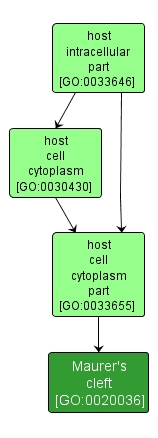| Desc: |
A disk-like structure that appears at the periphery of a red blood cell infected by an apicomplexan parasite, characterized by a translucent lumen and an electron-dense coat of variable thickness; often appears to be tethered to the host cell membrane by fibrous connections with the erythrocyte cytoskeleton. |














